Wristwatches have become so ingrained in everyday life that it’s easy to forget they’ve only been mainstream for just over a century. World War I largely popularized the concept of men’s wristwatches, but the watch world has come a long way from its days of war-derived utilitarianism. Today, watchmakers from all over the world–especially Switzerland– offer an array of luxury wristwatches with increasingly jaw-dropping movement complications. But each innovation is made possible by the inventions that came before, so let’s take a look back at a timeline of wristwatch history, and give credit to some important “firsts.”
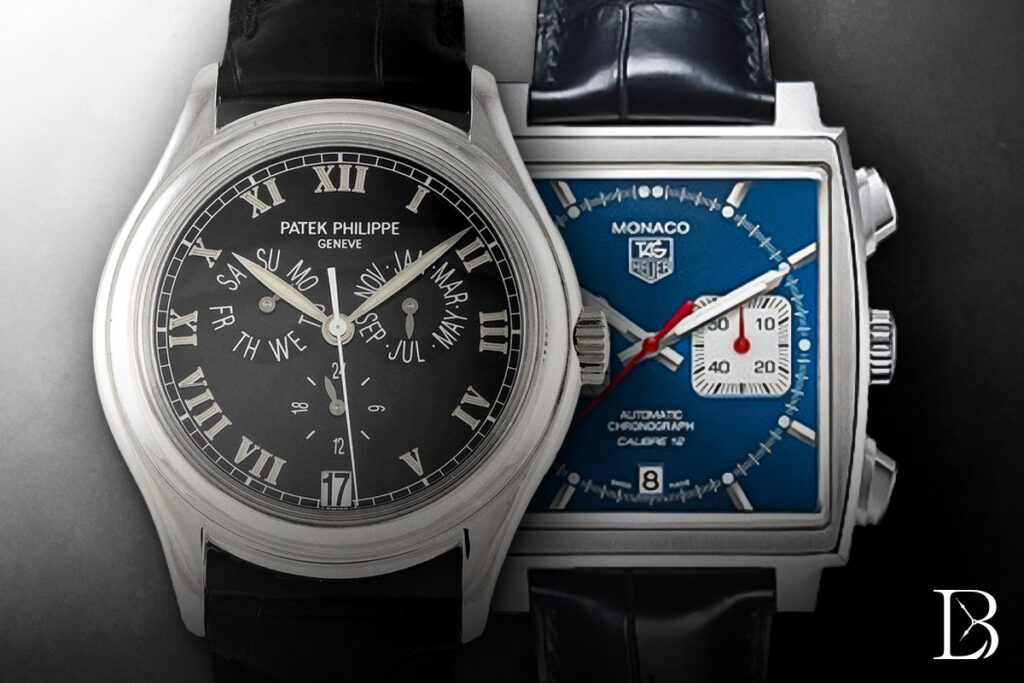
The Pre-Wristwatch Days: Setting the Stage for Today’s Industry
Switzerland’s dominance in the watch world wasn’t always a foregone conclusion. Although Swiss labor is relatively expensive now, American labor was more costly for much of history. In fact, Americans were the first to really try to mass-produce watches. Aaron Dennison, based in Massachusetts at the time, was the first to introduce the concept of interchangeable watch parts in the mid-1850’s, although his manufacturing expertise lagged behind that of the Swiss at the time and those watches weren’t very accurate. By the mid-1890’s, spurred by burgeoning railroad standards, the American watchmaking industry was humming along with increasing efficiency (often using some Swiss parts) and Ingersoll proudly introduced the world’s first $1 watch in 1896.
By the time wristwatches became popular, Switzerland’s watch industry was making the lion’s share of horological advancements. Five countries–the United States, England, Switzerland, Germany, and Japan–are responsible for most of the notable developments in the watch industry. We’ll take you through some of the most significant wristwatch milestones now.
First Known Wristwatch – Breguet (1812)
Although some would argue that there are a few historical mentions of “arm watches” dating back as far as the 1500’s, the oldest confirmed known wristwatch is a Breguet that was completed in 1812 for the Queen of Naples, Caroline Murat (Napoleon Bonaparte’s younger sister). Breguet even has records of servicing the watch in 1849 and 1855, although there are no known photographs of it.
First Men’s Wristwatch – Girard Perregaux? (1880)
Girard Perregaux claims to have supplied wristwatches with chain bracelets to the German Navy as early as 1880. However, there is no photographic evidence of any German military members wearing one. In fact, Girard Perregaux can’t produce a picture of one of these supposed 1880’s-era chain-bracelet watches at all. Photographs were less common then, but still, it’s odd that not a single example has survived if they were truly supplied in military quantities.
First Minute Repeater Wristwatch – Audemars Piguet/Omega (1892)
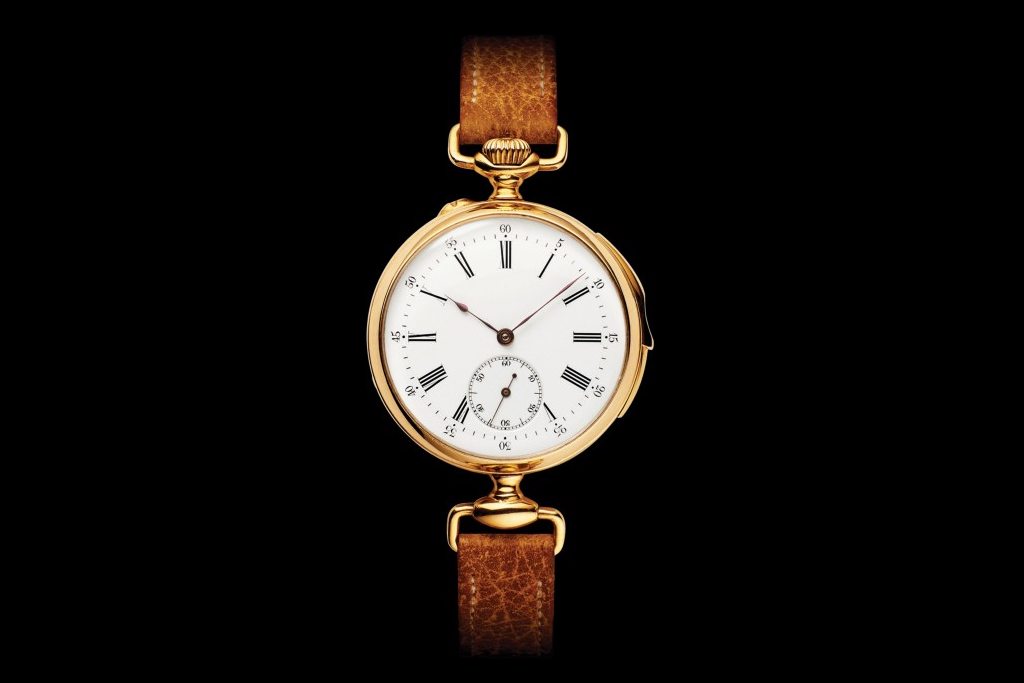
A minute repeater watch, which chimes the hours, quarter-hours and minutes on demand, is one of the most difficult complications to craft. Typically, only the world’s finest watch brands offer minute repeaters, which is why Louis Brandt & Frères (later renamed Omega) cased a movement from Audemars Piguet to create the world’s first minute repeater wristwatch in 1892.
First Pilot’s Watch – Cartier (1904)
Aviation was still in its infancy in 1904, when Alberto Santos-Dumont, a pioneering Brazilian aviator, asked Louis Cartier to design a wristwatch suitable for flight. Thus, the Santos de Cartier, the world’s first purpose-built pilot’s watch, was born. Cartier also likes to say that the Santos is the “first wristwatch marketed to men.” The fact that wristwatches were called “wristlets” in their early days probably didn’t help drive sales with men. In any case, the Santos remains an important and popular part of Cartier’s lineup today.
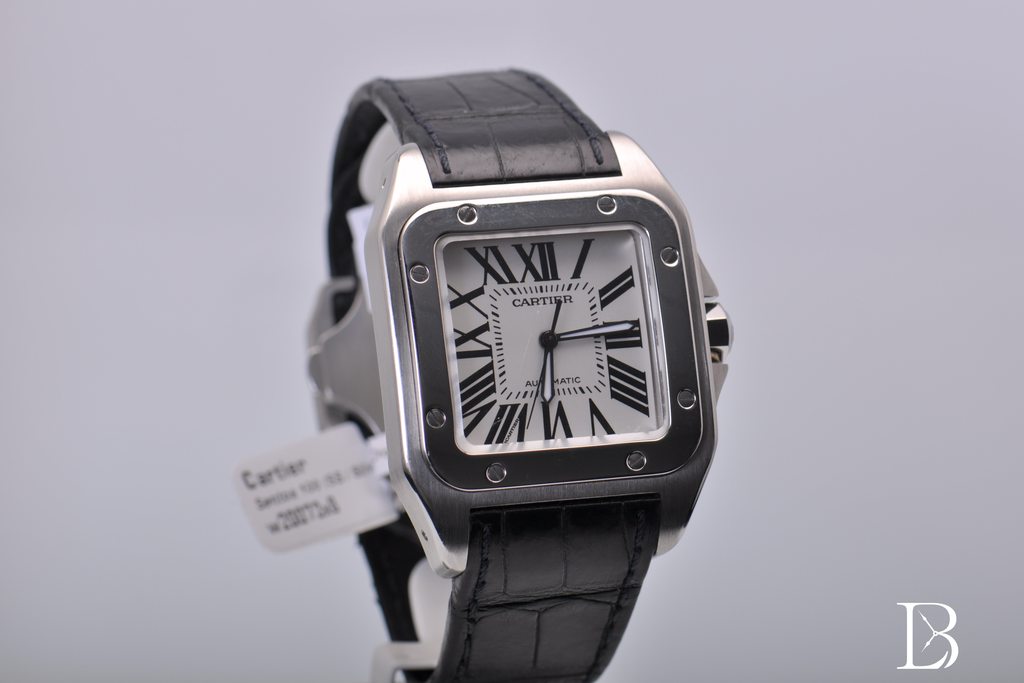
First Chronograph Wristwatch – Longines (1913)
Longines created the world’s first chronograph wristwatch in 1913, powered by their 13.33Z movement. It was a monopusher chronograph, which is sleek, although it’s actually the most simplistic possible type of chronograph. Nevertheless, chronographs are a very difficult complication to make, and Longines can be proud to have made the first one designed for a wrist.
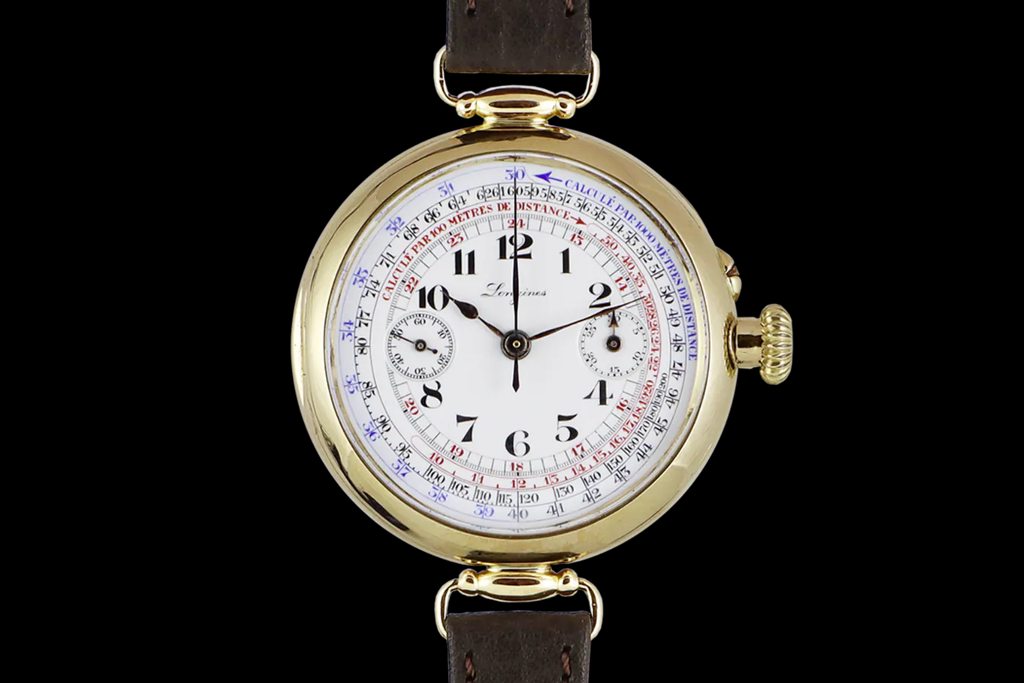
First Luminous Wristwatches/First Trench Watches (1914)
It’s difficult to say who made the first luminous wristwatch. Marie and Pierre Curie discovered radioactivity in 1898, and it took only about a decade for Dr. von Sochocky to develop a luminous radium-based paint. Radium paint factories were in full force by about 1914. Nobody needed to “invent” the luminous wristwatch per se. As soon as luminous paint was available, well, watches were a pretty obvious application for it. And highly legible watches were a pretty obvious necessity for soldiers at the time. The explosion of luminous watches is basically inseparable from the trench watch phenomenon of WW1, which arguably set the stage for mainstream wristwatch acceptance overall.
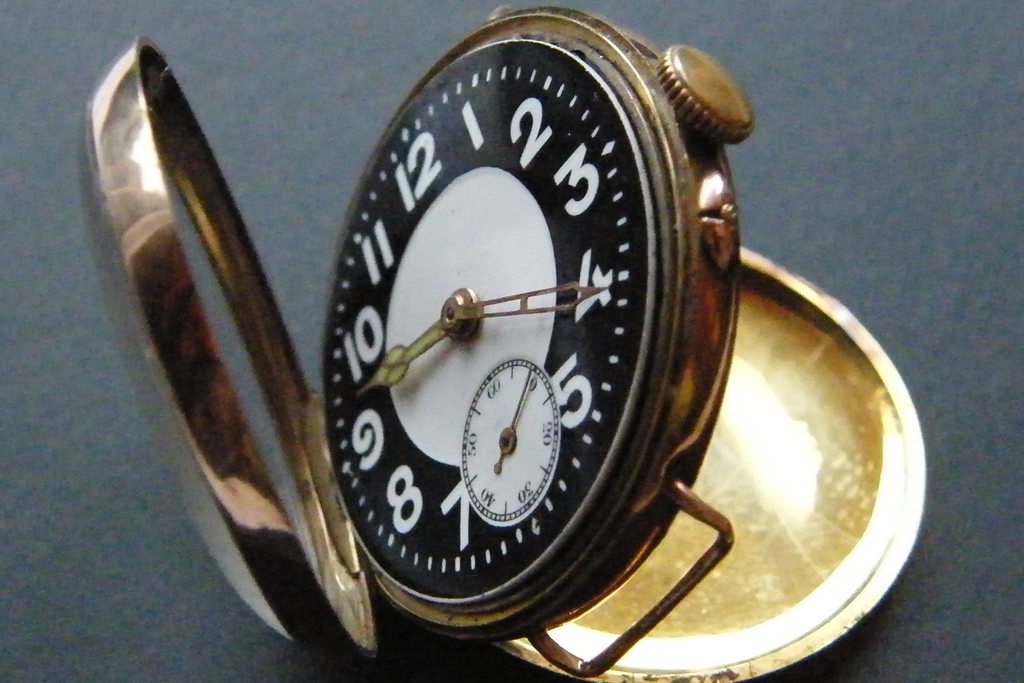
Converted pocket watches–pocket watches with lugs soldered on after-the-fact–are often cited as an early form of wristwatch. But it’s likely that they became popular after purpose-built wristwatches were common, rather than vice versa.
Some people are under the impression that Panerai was involved in inventing luminous material, or that they were the first to make a luminous wristwatch, but those stories seem to be unequivocally false. Panerai never made any particular advancements in the world of watch lume, although they had a patent for putting lume on gun sights. Luminous watches became ubiquitous so quickly during World War I that a “luminous wrist watch with unbreakable glass” was listed as an indispensable part of a British military officer’s kit in a book published in 1916.
First Two-Button Chronograph – Breitling (1915)
As with many wristwatch firsts, the creator of the first two-button chronograph is hard to pin down. The concept already existed on pocket watches, but monopusher chronographs were still the norm in the early days of the wristwatch. Breitling is careful to only claim that “Gaston Breitling created one of the first wrist-worn chronographs with an independent pusher at 2 o’clock” in 1915, but we can’t find any earlier examples.
First Waterproof Wristwatch – Charles Depollier (1918)
Before waterproof watches existed, water damage was practically an inevitability for all watches. The idea of a waterproof watch was thus kind of an obvious one, so the real question is who legitimately made a waterproof watch first. The word “waterproof” has fallen out of favor in modern times, with the logic being that nothing is ever truly 100% waterproof given enough pressure. But in the good old days, if a watch could be submerged in water and be perfectly fine, well, that was well enough a waterproof watch. The first “waterproof” watches didn’t have depth ratings at all.
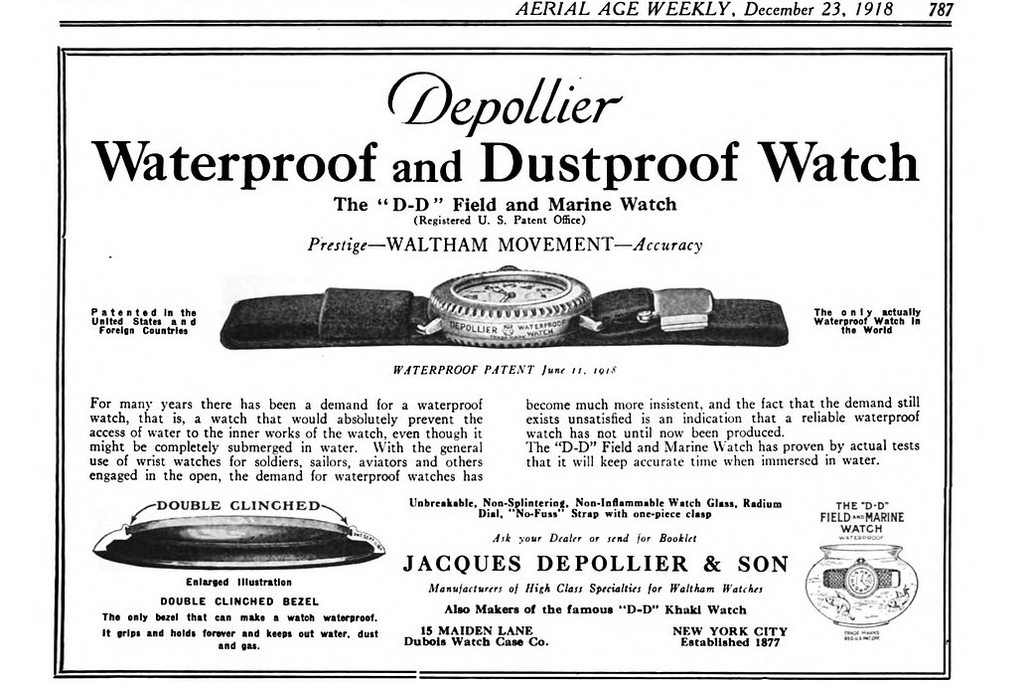
Rolex was not the first company to make a waterproof watch by a long shot. Primitive waterproof pocket watches date back to the 1850’s, but the race for the first truly waterproof wristwatch really heated up during WW1. Fortis made a waterproof wristwatch in 1915, as did Tavannes Watch Co. in 1917–but both arguably had practical design flaws that affected the longevity of their gaskets. It’s also unfair to overlook the Borgel case, which was patented in 1891 and could indeed be submerged in water, although it probably wouldn’t withstand extended underwater use. The American inventor Charles Depollier was (arguably) the first to come up with a truly sustainably “waterproof” design, as detailed in Stan Czubernat’s book The Inconvenient Truth About the First Waterproof Watch.
Waltham frequently gets credited along with Depollier for this breakthrough watch, because Waltham movements were often used, but it was really the Depollier case that made it waterproof. Other cheaper movements from makers like Illinois and Elgin were also sometimes put in waterproof Depollier cases; the movement brand had nothing to do with its water resistance.
Perhaps a lack of coherent branding is why Depollier never dominated the consumer world. Soldiers who may have loved their Depollier-cased watches in WW1 would have likely only seen “Illinois” when they looked at the dial. The name “Depollier” was surely unknown to them, and perhaps Depollier’s fate would’ve been different if he’d had the foresight to stamp his name on the dials. Or perhaps he just bet too heavily on the military market, because although the US military was ordering thousands of his watches during World War 1, when the war ended, Depollier–part of Brooklyn’s once-thriving watch case industry–seemed to fall off the map.
First Jump-Hour Wristwatch/First Digital Wristwatch – Josef Pallweber/Cortébert (1922)
Josef Pallweber invented the jump-hour watch in 1883, but it would be decades before the idea was used in a wristwatch. Jump-hour watches display the time digitally (meaning literally with digits), which is pretty cool. Cortébert licensed Pallweber’s patent and released some jump-hour wristwatches in the early 1920’s, but the concept never really caught fire with mainstream buyers. So, examples of early Cortébert jump-hours are quite scarce. Today, the most popular mechanical digital luxury watch is almost certainly the Zeitwerk from A. Lange & Söhne.

First Rattrapante (Split-Seconds Chronograph) – Patek Philippe (1922)
Rattrapante watches, often simply called split-seconds chronographs, have two chronograph seconds hands in order to time intervals. This means that when you start the chronograph (with the top pusher), both chrono seconds hands start moving. When you want to mark a time but also keep the timer going, pressing the bottom button will stop one of the chrono hands so it can be read. The main chronograph hand marches on, and the secondary chronograph hand will “catch up” to it when the bottom pusher is pressed again. Patek Philippe is credited with releasing the world’s first split-seconds chronograph wristwatch in the early 1920’s, and it remains a popular complication for ultra-high-end luxury watches.
First Perpetual Calendar Wristwatch (and First Moon Phase) – Patek Philippe (1925)
The Patek Philippe 97975, released in 1925, was an extremely historically important wristwatch. Not only was it the world’s first perpetual calendar wristwatch, but it was also the first moon phase wristwatch. Well, at least it was the first serially-produced moon phase wristwatch, as Breguet claims the 1812 Caroline Murat watch had a moon phase complication. Regardless, the classic four-register layout of ref. 97975’s dial has remained the blueprint for most perpetual calendar watches to this day.
First Automatic Watch – John Harwood/Fortis (1926)
Fortis unveiled the world’s first serially-produced automatic wristwatch–the Harwood Automatic–at Baselworld 1926. This was based on the English watchmaker John Harwood’s 1924 patent. Decades later, Harwood successfully sued Rolex for stating that they had invented the first automatic watch.
First Date Window – Graef & Co. (1930)
Although date windows appeared in the early 1930’s on a handful of watches like the Mimo-Meter, Marlys-Date and some Vertex models, they all seem to stem from a patent owned by Graef & Co. from 1930. The famous Rolex Datejust didn’t come out until 1945–the year the Graef patent would have expired.
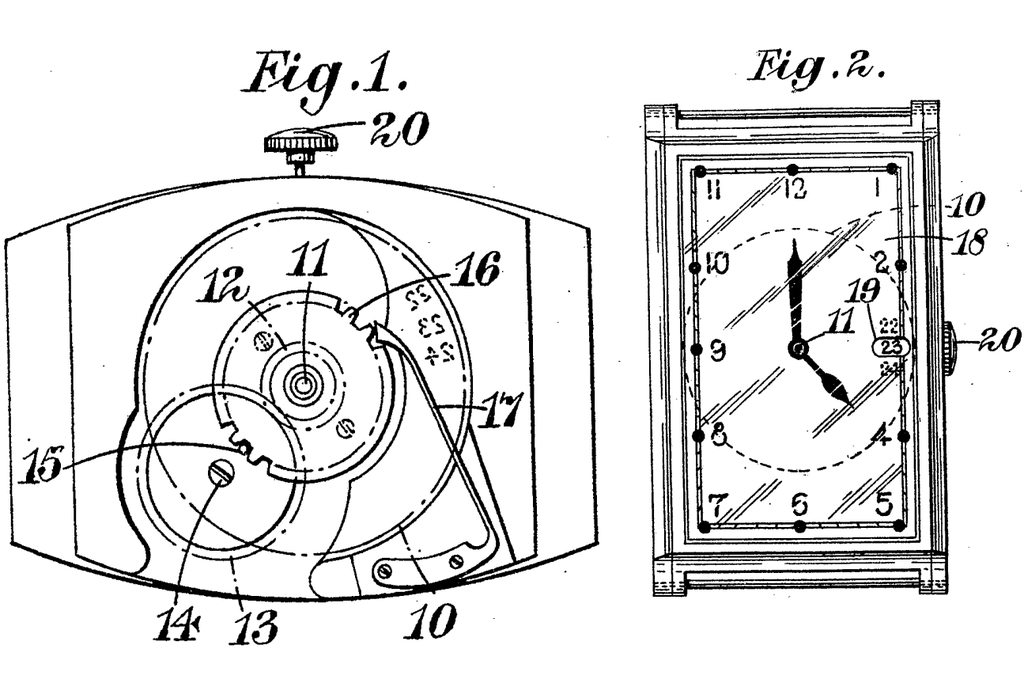
First Rotating Bezel – Phillip Van Horn Weems/Longines (1931)
Philip Van Horn Weems was an esteemed navigator and US Naval officer who wrote multiple books on the subject of navigation, including “Star Altitude Curves” which contained a groundbreakingly efficient method of celestial navigation. Weems mentored people like Charles Lindbergh, and he was even a pioneer in the early stages of space navigation. To this day, the Institute of Navigation gives a P.V.H. Weems Award every year. But frankly, Captain Weems is underappreciated in the watch world. Along with input from Lindbergh, Weems invented the world’s first rotating bezel.
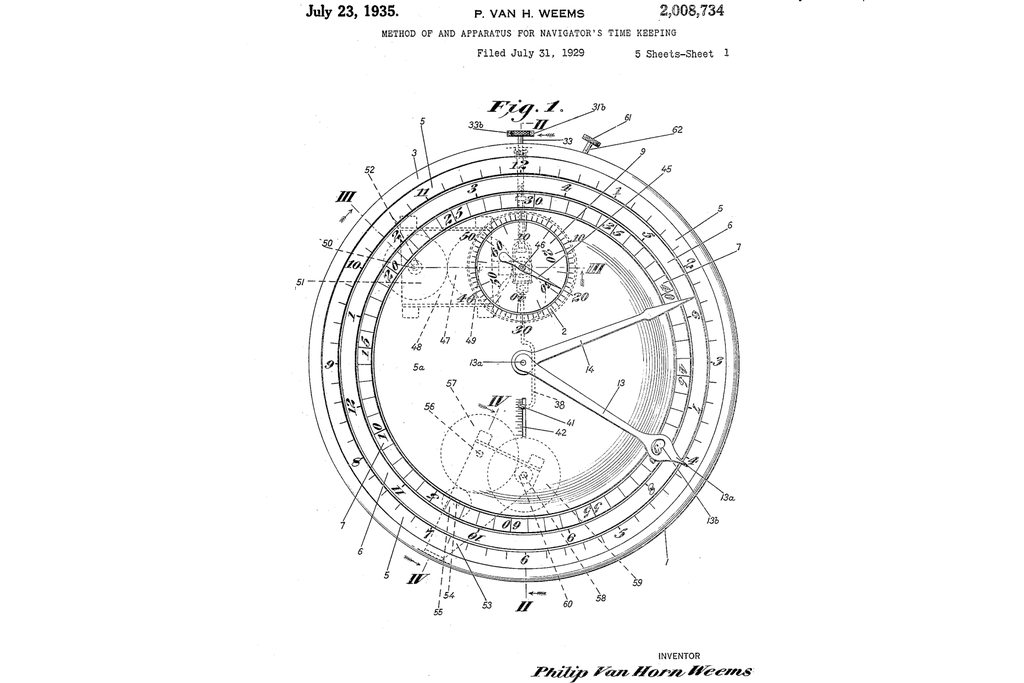
Longines licensed the Weems bezel patent, which he applied for in 1929, and they produced the first example of a wristwatch with a timing bezel in 1931. The US Patent Office didn’t actually grant the Weems patent (#2,008,734) until July of 1935. Given the 17-year duration of patents at the time, that means the American patent for rotating watch bezels expired in 1952. Rotating GMT bezels and dive bezels took the watch world by storm in 1953, which is unlikely to be a coincidence. Putting a Weems-style bezel on a waterproof watch would’ve been a somewhat obvious idea once the Weems patent expired, so arguing whether Blancpain or Rolex “invented” the dive watch is a bit of a moot point–Philip Van Horn Weems is the true godfather of all rotating bezels.
In retrospect, it does seem like Longines squandered a potential two-decade head start on GMT watches and timing-bezel dive watches. And, with all due respect to Longines, they haven’t really been a world-leading brand ever since, although they’ve been successful in the affordable-luxury space.
First Rotor Automatic – Rolex (1931)
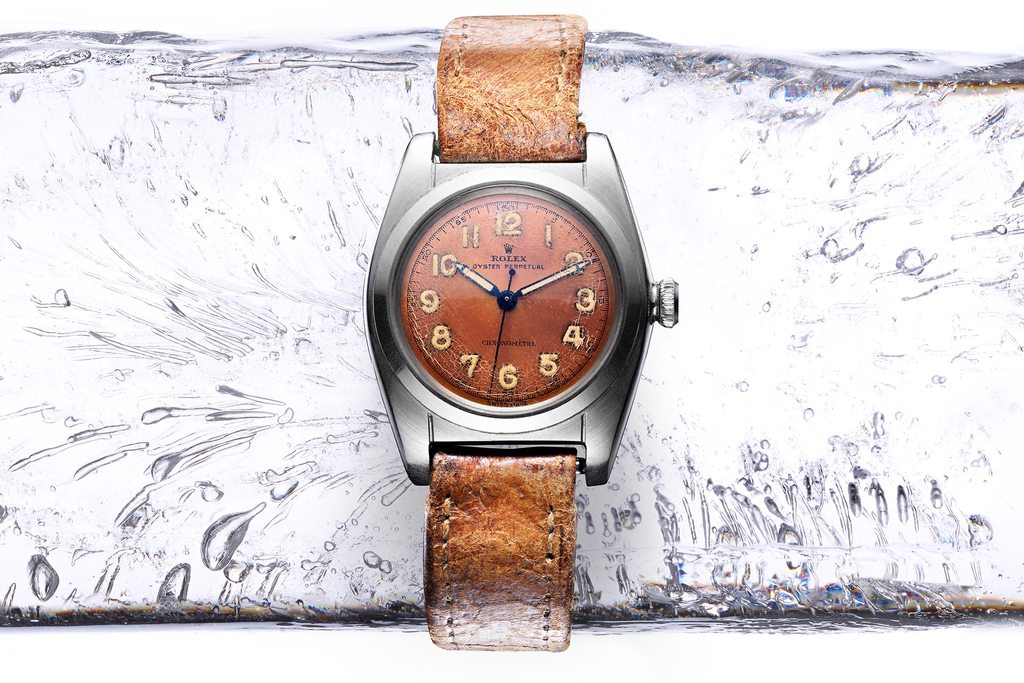
As noted, Rolex was not the first to make an automatic wristwatch–but they were the first to make a rotor automatic wristwatch. This design was an undeniable improvement over earlier “bumper” automatic movements. As with many of Rolex’s innovations, Rolex purchased the rights to the patent from the original inventor. They were savvy enough to know which patents were worth going after, and that largely set Rolex up for the success they enjoy today.
First Dive Watch – Omega Marine (1932)
Although the Blancpain Fifty Fathoms often gets credited as the world’s first dive watch, professional divers had been using the Omega Marine for two full decades prior. The Marine didn’t have the rotating bezel that we now associate with dive watches, but it was waterproof enough for diving, and it even had a diver’s extension on the clasp. Plus, divers used it–so we can feel quite comfortable calling this a “dive watch.”
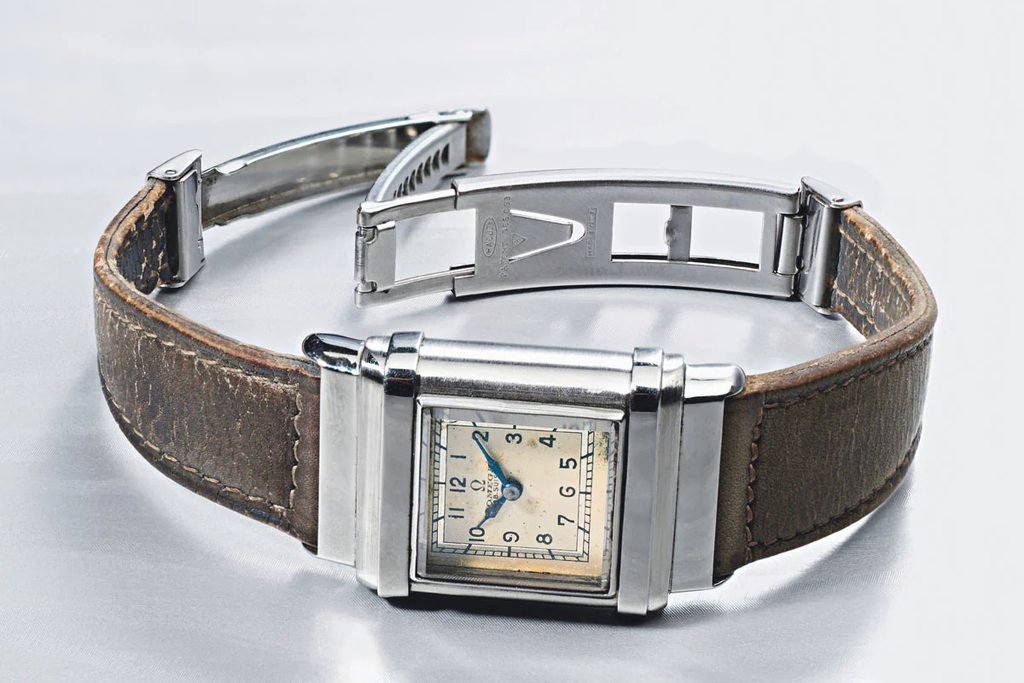
First Big Date – Helvetia (1932)
Helvetia was a fairly important Swiss movement maker in their heyday, which was right around the time they invented the first big-date wristwatch movement in 1932. They produced watches under their own brand as well. Soon, several brands were offering watches with large date functionality, meaning two discs are used to represent the date instead of one.
First Flyback Chronograph Wristwatch – Longines (1936)
The 13ZN by Longines debuted in 1936 and is often credited with being the first flyback chronograph wristwatch. There were some earlier prototypes, but the 13ZN does seem to be the first flyback wristwatch chrono produced in any significant quantity. Flyback chronographs can be restarted simply by pushing the “start” button again–even if the chrono is already running. It’s worth mentioning that Breitling invented a flyback chronograph movement in 1923, although the patent illustrations seem to show a pocket watch.
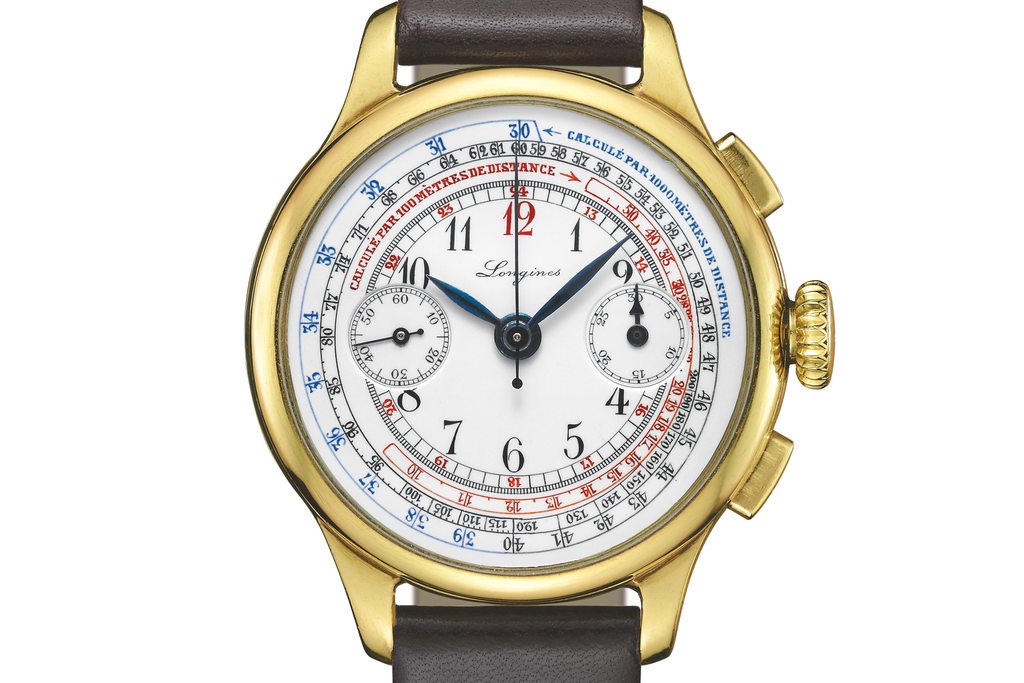
First Worldtimer – Patek Philippe (1937)
The first world time wristwatch (sometimes just called “worldtimer”) as we know it today was unveiled by Patek Philippe in 1937. Even today, Patek and many other watchmakers continue to make world time watches with the same general layout.
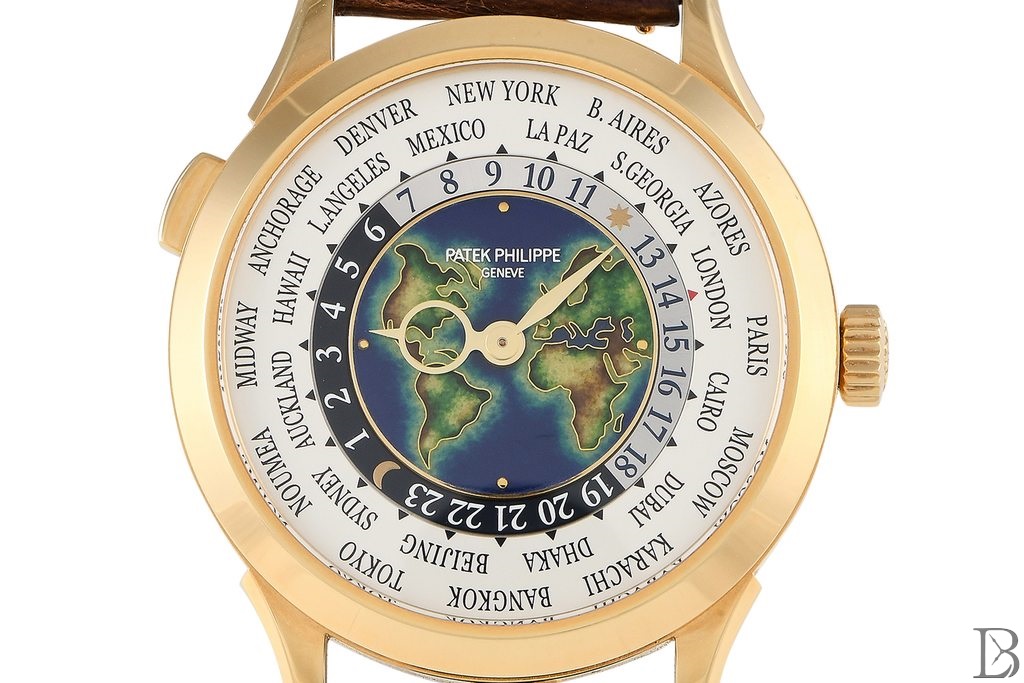
First Perpetual Calendar Chronograph – Patek Philippe (1941)
The first perpetual calendar chronograph wristwatch, Patek Philippe ref. 1518, is one of the most expensive watches in the world. Although we take them for granted now, mechanical chronographs on their own are a very difficult complication to make well. Combining a chronograph with a perpetual calendar was quite a feat in 1941.
First Tourbillon Wristwatch – Omega (1947)
Omega apparently made at least one prototype of a tourbillon wristwatch in 1947, although it was intended for timekeeping competitions, not the public. Tourbillons honestly aren’t particularly useful in wristwatches, as they typically only provide marginally increased precision, which is probably why nobody bothered making tourbillon wristwatches in significant quantities for another four decades after that.
Tourbillons sure do look cool though, and Breguet was largely responsible for popularizing modern tourbillon watches beginning in the late 1980’s with the Classique Tourbillon Messidor. That’s fitting, as Abraham-Louis Breguet was the original inventor of the tourbillon in the early 1800’s. Today, you’d be hard-pressed to find a six-figure watch brand that doesn’t offer tourbillons.
First Alarm Wristwatch – Vulcain Cricket (1947)
A rather underrated watch complication is the alarm function. Vulcain was the first to make an alarm wristwatch with the Cricket in 1947, known for the distinctive “buzzing” it makes when the alarm goes off. The brand Vulcain still exists today, making Cricket models that are aesthetically faithful to the originals.
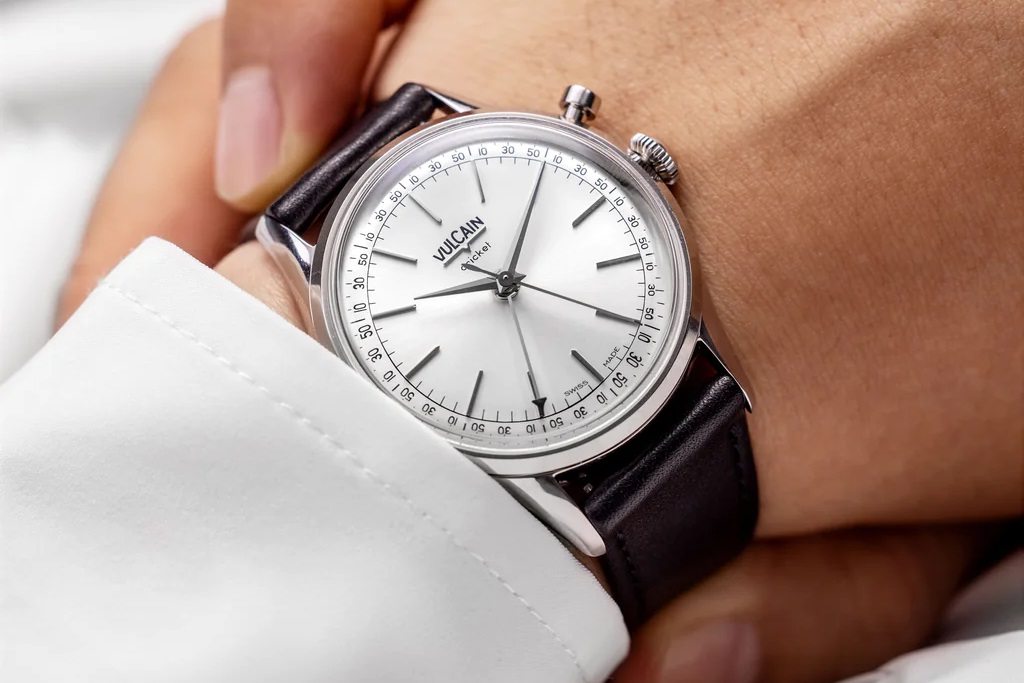
First GMT Watch – Glycine (1953)
Glycine created the world’s first GMT watch in 1953 with the release of the Airman. Its 24-hour rotating bezel was revolutionary at the time, allowing the wearer to track two time zones easily. The hour hand of the original Glycine Airman was set on a 24-hour scale rather than the standard 12-hour layout, so it didn’t need a fourth hand to track the second time zone on the bezel. The densely-packed hours make the local time a bit harder to read at a glance than a typical watch, though. The Rolex GMT-Master, released the next year, added a fourth hand so that it could retain a standard 12-hour hand, and that design proved more popular.

First Modern Dive Watch – Blancpain, Rolex (1953)
Blancpain is generally credited with releasing the first modern dive watch in 1953, the Fifty Fathoms. Although it was neither the first watch with a rotating bezel, nor the first dive watch, it was the first purpose-built dive watch with a rotating timing bezel–a feature now considered to be a standard, defining feature of a dive watch. The Rolex Submariner debuted around the same time as the Fifty Fathoms, and there is some evidence that Rolex was already testing Submariners in 1952, but Blancpain insists they were the first.
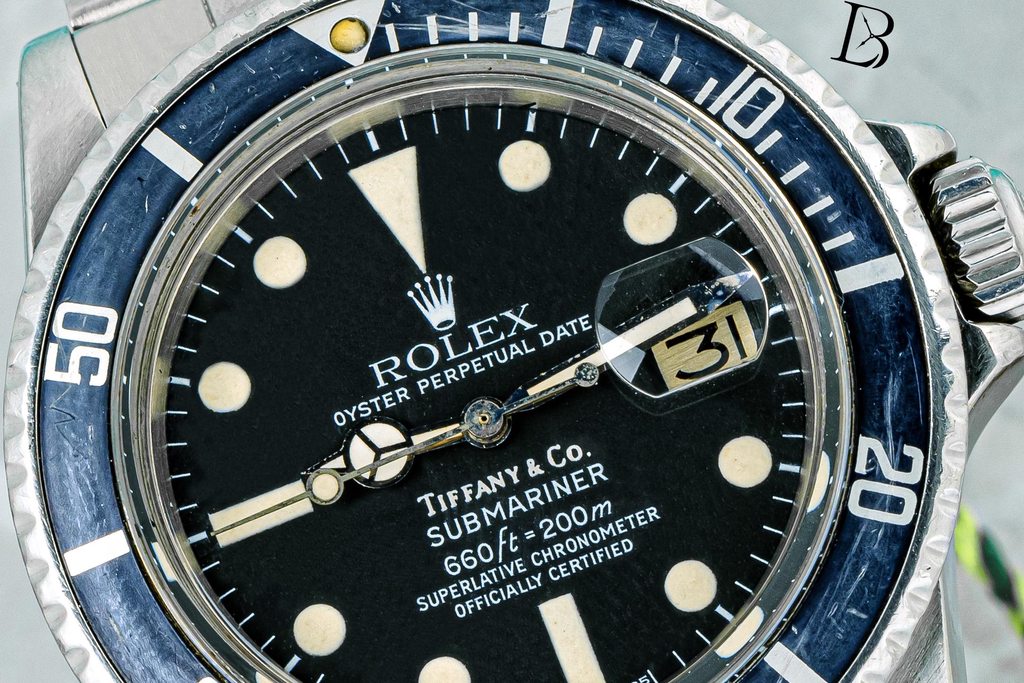
Brands don’t always know their own history perfectly, though. Zodiac still brags about also releasing a dive watch in 1953–despite rather conclusive evidence in a Swiss horological journal from 1958 that congratulated Zodiac for releasing the Sea-Wolf that year (as first uncovered by Perezcope).
First Perpetual Calendar with Leap-Year Indicator – Audemars Piguet (1955)
Nowadays, watch enthusiasts expect leap-year indicators on perpetual calendar watches, but that innovation didn’t actually exist until 1955, when the Audemars Piguet ref. 5516 debuted.

First Full Day Display – Rolex Day-Date (1956)
A lot of the “firsts” that Rolex claim are dubious, but they are undeniably the creators of the first wristwatch with a fully spelled-out day: The Rolex Day-Date, sometimes known as the “Presidential” or “President,” debuted in 1956 and has remained a popular luxury watch ever since. It is only sold in solid gold or platinum.
First Electric Wristwatch – Hamilton (1957)
The future of American watchmaking seemed hopeful and bright when Hamilton made the world’s first electric watch, the Hamilton Electric 500, in 1957. Keep in mind that this was not electronic–there was no circuit board, just basically a mechanical movement driven by a battery. This provided some convenience, as the wearer never needed to wind the watch, but it didn’t create the breakthroughs in accuracy that later battery-powered technologies brought. Still, it seemed like an important win for the US watch industry at the time.
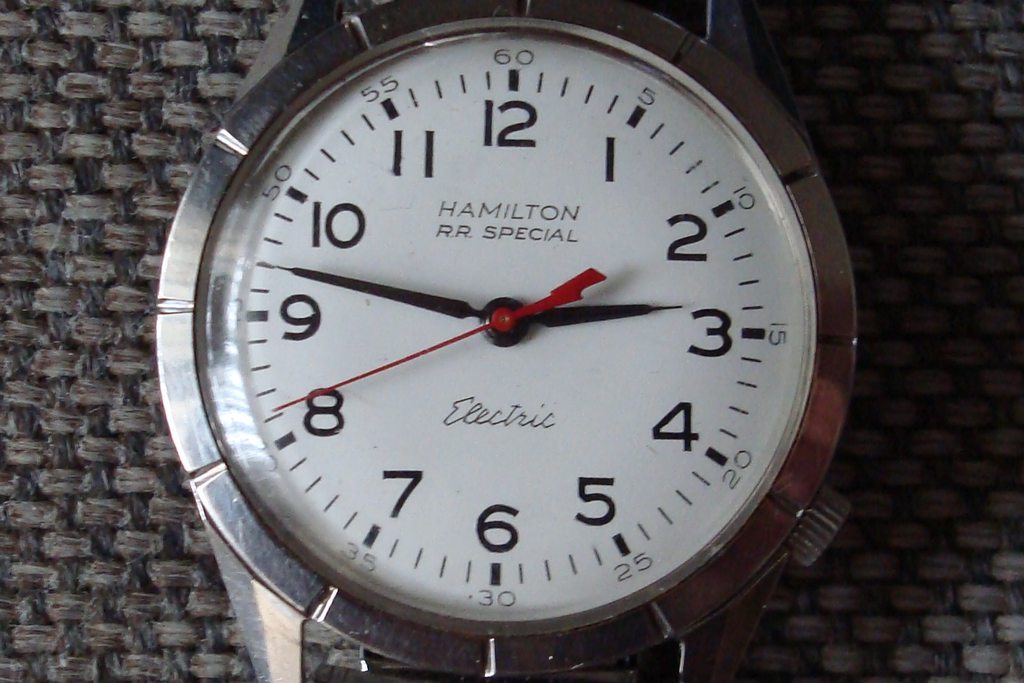
First Electronic Watch – Bulova (1960)
The Bulova Accutron, the world’s first electronic watch, looked like it was ready to take over the world when it debuted in 1960. Its innovative “tuning fork” movement was very accurate, although not as accurate as quartz watches that would come later. Bulova ads bragged that the Accutron made “the finest watches–even electric watches–obsolete.”
The book Selling the Crown details how Rolex was so terrified of Bulova in the 1960’s that they basically engaged in corporate espionage to keep tabs on them. The American watch industry was indeed looking formidable at the time, but unfortunately the Accutron would prove to be one of the final truly major American contributions to watchmaking. The Accutron was the boss of the 1960’s, but by the 1970’s, quartz was king, and the American watch manufacturing industry practically ceased to exist. People often talk about how hard the “quartz crisis” hit Switzerland, while overlooking just how quickly and thoroughly it obliterated US watchmaking.
First Sapphire Crystal (and First Integrated Bracelet) – Rolex (1964)
Although the Audemars Piguet Royal Oak is famous for its integrated bracelet, sapphire crystal, and Gérald Genta-penned design, Rolex released a watch with all three of those characteristics years earlier. In 1964, Rolex released the Genta-designed King Midas model, a solid gold limited-edition watch that came in its own special urn. The King Midas was the first known wristwatch to feature a sapphire crystal, and it was also the first watch to sport an integrated bracelet as we know it today. It was very expensive in its day, even compared to other gold watches, and Elvis was known to wear one.
First Automatic Chronograph – Heuer, Seiko, Zenith (1969)
The race to make the first automatic chronograph was almost as heated as the race to make the first quartz watch happening at the same time. Three brands are often mentioned when the topic of “first auto chronograph” is brought up: Heuer created the very first example of an automatic chronograph wristwatch, Seiko was the first to actually bring one to market, and Zenith was the first to make a fully integrated automatic chronograph movement (meaning it wasn’t just a standard movement with a chronograph module bolted on).
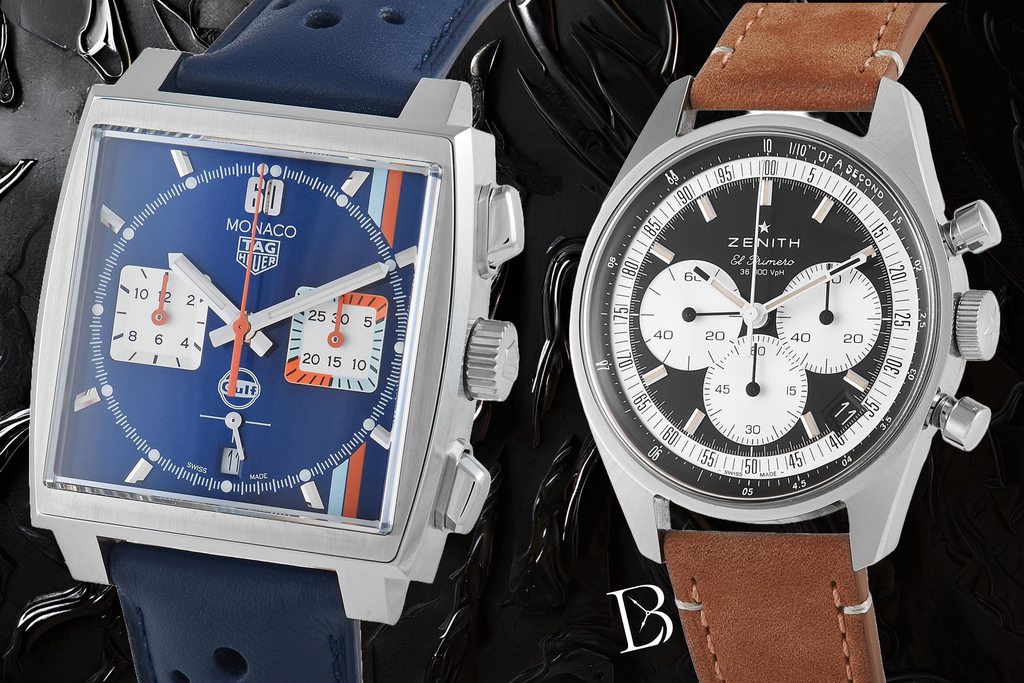
Zenith and Heuer (now TAG Heuer) are still known for their chronographs–Zenith’s El Primero movement is widely beloved and TAG Heuer’s Monaco remains quite popular–but Seiko is probably best known for an advancement they made later in 1969.
First Quartz Watch – Seiko (1969)
The Swiss watch industry proudly unveiled a quartz oscillator prototype in 1965, and a complete quartz watch prototype by 1967. Although the potential of quartz as a timekeeping breakthrough was then widely known, it still took years and years of development for quartz watches to become reality. In late 1969, Seiko released their Astron upon the world. Seiko had beaten everyone else to market with the first production quartz watch, without ever having showed off any prototypes at all. This would lead to a quarter-century of unprecedented good fortune for the Japanese watch industry.
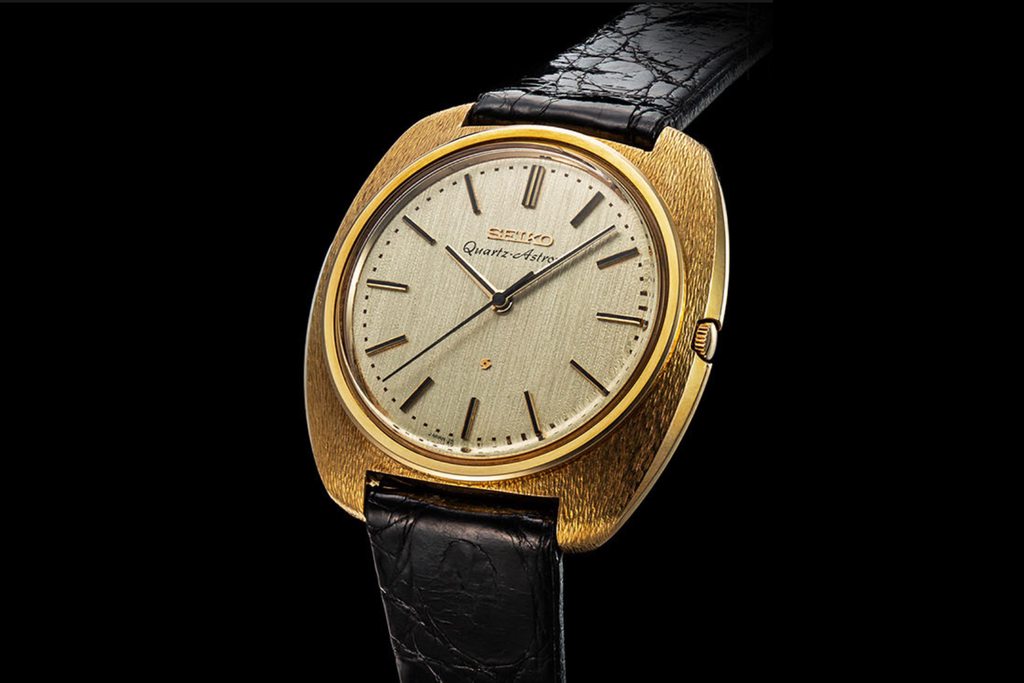
First Titanium Watch – Citizen (1970)
Soon after the Astron debuted, Japan achieved another wristwatch first: a fully titanium case. Citizen made less than 2,000 titanium examples of their X-8 model in 1970.
First Digital Electronic Watch – Hamilton Pulsar (1972)
One of the last great American contributions to watchmaking was the digital electronic watch. The Hamilton Pulsar P1, originally released in 1972, simply presented the time in bold red LED digits.

First Bronze Watch – Gérald Genta (1984)
Bronze’s tendency to quickly oxidize (or “patina” as it might generously be called) makes it a rather unnatural choice for a luxury watch case. Perhaps that’s why nobody made a bronze wristwatch until 1984, when Gérald Genta released the Gefica Safari, supposedly at the behest of hunters who wanted a non-glimmery watch to wear on their safaris. At this point, several luxury watch companies–like IWC, Panerai, and Tudor–have dabbled with bronze cases, although it remains a somewhat niche material.
First Ceramic Watch – IWC (1985)
Although Rado experimented with ceramic-like tungsten carbide cases as far back as the 1960’s, the first true ceramic watch case came in 1985 in the form of an IWC Da Vinci Perpetual Calendar. Nowadays, ceramic cases are being used by an increasing number of high-end watch brands for its light weight and excellent scratch resistance.
First Annual Calendar – Patek Philippe (1996)
Some watch fans might be surprised to learn that the annual calendar was developed long after the perpetual calendar, despite being a simpler complication. Patek made wristwatch history by releasing the first annual calendar, ref. 5035, in 1996. Perpetual calendars need four date gears to account for four possible month lengths, while annual calendars–simply by treating February as a 31-day month–only need two. This makes the watch design inherently more robust by significantly reducing parts and also reducing the difficulty of setting the mechanism.

The only downside to an annual calendar (relative to a perpetual calendar) is that you have to click the date forward on March 1 every year, but some would say that’s far less of an inconvenience than dealing with a perpetual calendar overall. And most of us don’t really need a leap year indicator on our watch dial.
First Double Split Chronograph – A. Lange & Sohne (2004)
Split-seconds (or “rattrapante”) chronographs all have two chronograph seconds hands, but they don’t normally have an extra chrono minutes hand too, A. Lange & Söhne was the first to release that feature with their Double Split Chronograph in 2004.
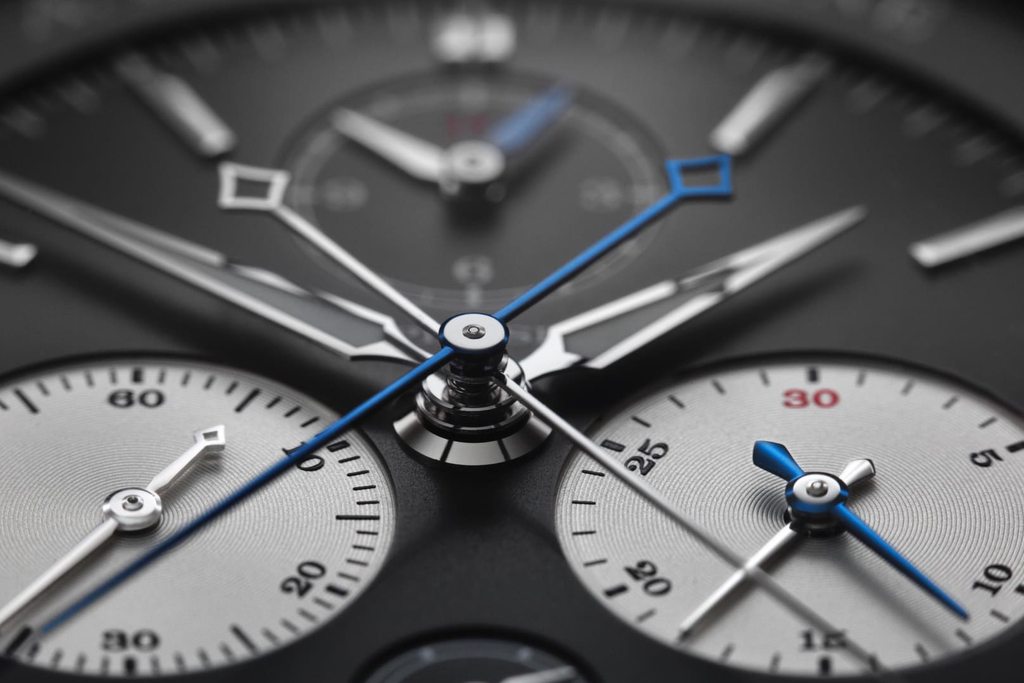
The Double Split is the worldʼs first mechanical chronograph with a double-rattrapante function. It features two chronograph hands and two rattrapante hands. Both pairs of hands can be stopped separately. Additionally, the stopped rattrapante hands can rejoin the still running chronograph hands.
alange-soehne.com
First Sapphire Case – Richard Mille (2011)
The brilliant Vincent Calabrese, the man behind Corum’s famous Golden Bridge design, created a prototype sapphire-case wristwatch in the 1970’s. There was some metal used on the case where the strap was attached, though, and that design never entered production, so we’ll give “first fully sapphire-cased watch” to Richard Mille. They released their red-hot RM056 in 2011, which may have gotten its name from the 56 days of continuous diamond-milling required to shape its sapphire case and bridges. There are now a handful of crystal Richard Mille models, and they all sell for millions of dollars, making them the most expensive sports watches in the world.
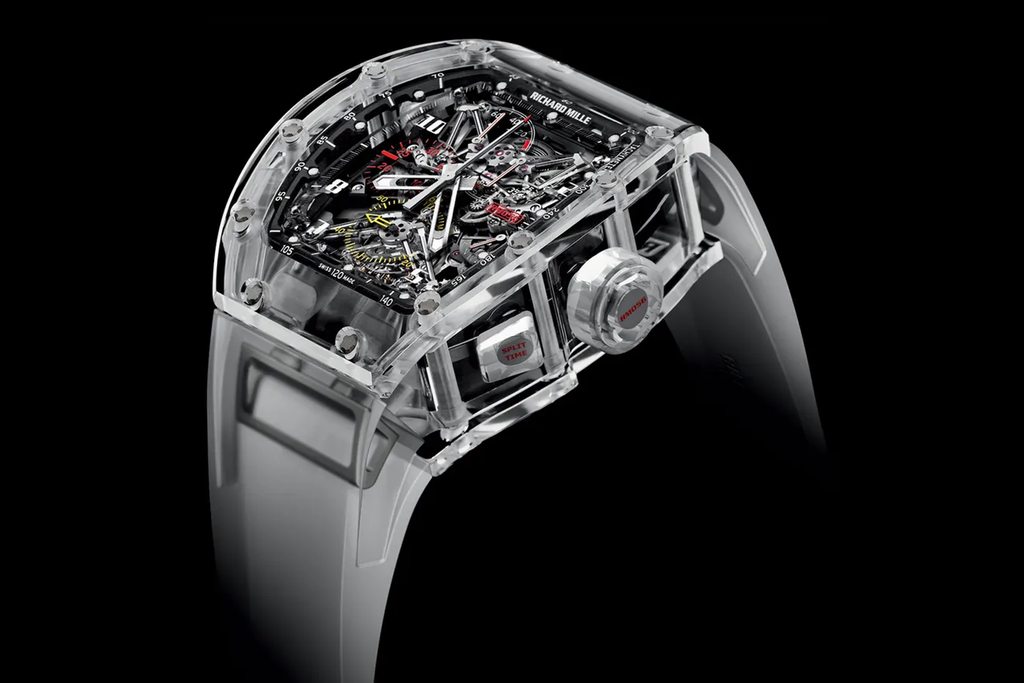
First Watch Under 2mm Thick – Bvlgari (2022)
Since the 2010’s, Piaget, Nomos, JLC and Bvlgari have all been fighting to make wristwatch history with “thinnest watch” records. Bvlgari’s Octo Finissimo Automatic watches are just over 5mm thick–incredibly slim for a self-winding watch. But in 2022, Bvlgari reached an even more impressive milestone by creating the first mechanical watch less than 2mm thick: The Octo Finissimo Ultra has an astounding case height of 1.8mm. It held the title of “thinnest watch in the world” only briefly, beaten by the ludicrous 1.75mm-thick RM UP-01 FERRARI from Richard Mille. By April 2024, however, Bulgari had recaptured the record with the 1.7mm Octo Finissimo Ultra COSC.
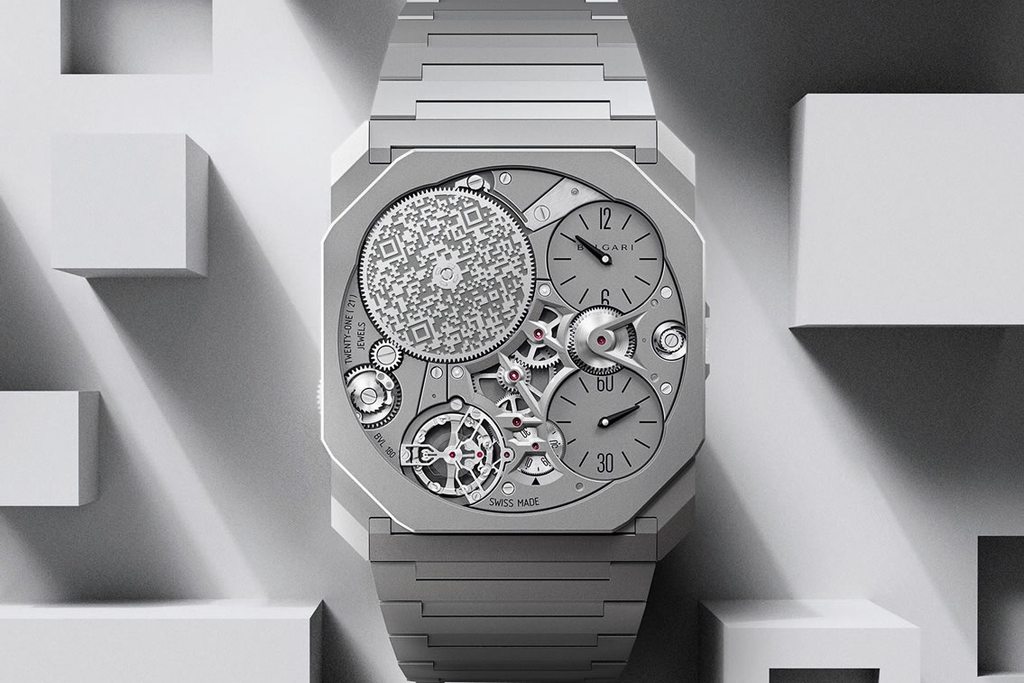
This is far from an exhaustive list of horological developments. There’s plenty more to dive into regarding watch material innovations, various constant-force mechanisms, developments in tourbillon and chiming complications, and much more. But for now, we hope we’ve given you enough wristwatch history to see where the watch world has been, and where it’s going!

